

... Rebecca Heineman
By Scott Stilphen
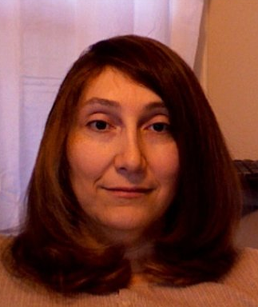
DP: Whatís your educational background?
Rebecca Heineman: I have a GED from Whittier High School. I never officially graduated, since I left home to program computers when I was 16.
DP: What inspired you to go into game design?
Rebecca Heineman: I love video games. I played pretty much every Apple II and Atari 2600 game there was at the time and I wanted to try my hand at making them.
DP: Were there any programmers or games that inspired you?
Rebecca Heineman: I think
Wizardry was the game that inspired a lot of my early think about how games
can be made. I lost so many hours playing that from start to finish on my Apple
II
I think
Wizardry was the game that inspired a lot of my early think about how games
can be made. I lost so many hours playing that from start to finish on my Apple
II
DP: What titles did you work on?
Rebecca Heineman: All of them. In reality, Iíve worked on over 250 games so far and Iíve actually lost track of some of them. Mindshadow, Tracer Sanction, Chuck Norris Superkicks (VIC-20) were some of my early favorites.
DP: Iím hoping you can help correct our info. We have notes that you did some 2600 games Ė Avalon Hillís ďLondon BlitzĒ and ďOut of ControlĒ. We also have notes that say London Blitz was done by William O. Sheppard and Jean Baer, and that Out of Control by Jim Jacob and Jean Baer.
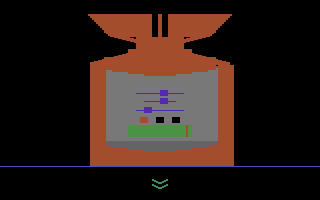
Rebecca Heineman: I worked on a lot of the underlying code. I also did some prototypes. I left Avalon Hill before the games shipped, so I donít know how much of my code stayed in those titles. I was there teaching the programmers how to program the 2600. I did a lot of minor contracting work. I recall doing some work on a Jedi Arena game, but I canít remember if it was used.
DP: When did you start at Interplay?
Rebecca Heineman: The real person who started Interplay was Brian Fargo. I was there from day 1 with Jay Patel and Troy Worrell. When Boone Corporation went under, he asked everyone if we wanted to join up with him on his new startup. Of course, I said yes. I was there for 11 Ĺ years and saw it grow from a tiny office of 5 people to a company with over 500.
DP: Were the titles you worked on assigned, or chosen by yourself?
Rebecca Heineman: Many of them were chosen by me during my early years. When I was at EA, I worked on the project I was assigned, although I really enjoyed my work.
DP: Did you work with any graphics or sound artists? If so, do you recall who helped with what?
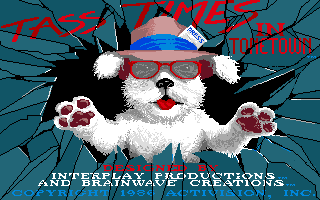 Rebecca Heineman:
I worked with a lot of people. Iíve worked with ďThe Fat ManĒ George
Sanger, Kurt Heiden (Bards Tale III, Dragon Wars), Dave Warhol &
Russell Lieblich (Tass Times in Tonetown) and Charles Deenen for music
and audio. For visuals, thereís Chad Max, Jeff MacAteer and David Lowery just to
name a few. I just took their art and music and made the systems play and show
it as closely to the artistís visions as technically possible.
Rebecca Heineman:
I worked with a lot of people. Iíve worked with ďThe Fat ManĒ George
Sanger, Kurt Heiden (Bards Tale III, Dragon Wars), Dave Warhol &
Russell Lieblich (Tass Times in Tonetown) and Charles Deenen for music
and audio. For visuals, thereís Chad Max, Jeff MacAteer and David Lowery just to
name a few. I just took their art and music and made the systems play and show
it as closely to the artistís visions as technically possible.
Thereís hundreds Iíve worked on. Usually, my games are designed by others and I update the design to make it feasible for use on a computer. I add a lot of prose after the fact for filler when itís discovered that there were ways a game can be played that the original designer didnít take into account.
DP: What was the easiest/hardest part of designing each one?

Rebecca Heineman: The easiest for me is coming up with how to implement a game. I always envision in my head what the game should look like on the screen before a line of code is written. Then I design the code to work with that. It allows me to get the game up and running in a very short period of time.
The hardest? That had to be Track Meet for the Gameboy. The game design was totally changed every few weeks so I had to keep starting the project over from scratch until it was done. This made a 3 month project take almost a year.
DP: With your games, were there any features you would have liked to added, or any known bugs or glitches that gave you trouble (or never got resolved)?
Rebecca Heineman: Always. Sadly, there are nowhere near enough hours in a day to even try to go back to some of my favorite ones and update them. Maybe when I retire in 30 years.
DP: If you had a chance to redo any of your games, what would you change (if anything)?
Rebecca Heineman: Iíd do Wasteland II. Period.
 DP:
Do you remember
what early or tentative titles your other games had (if any)?
DP:
Do you remember
what early or tentative titles your other games had (if any)?
Rebecca Heineman: Bardís Tale IV was a title I had until I was told a month before release we couldnít use the name. So, Dragon Wars the name was handed to me. Too bad there werenít any dragons in the game at the time. So I had to add one.
Graphics Master for the Apple II (released in 1987) was originally called QuickDraw, which was a graphics editor I wrote in 1984 to draw the art in Mindshadow and Tracer Sanction. Later, I turned it into a basic art program which was used for Bard's Tale, Tass Times in Tone Town, Wasteland, and many other Apple II and C-64 titles at Interplay.
DP: Were there any games or projects that you worked on that ultimately never got released or even finished?
Rebecca Heineman: Half Life for the Mac. It was done. Then Valve decided they didnít want to release it. It was a really sad day at the office when the news hit.
In 1983, I wrote a 3D space shooter for Boone called Final Eclipse. Boxes were made, since I have one. It's the ongoing saga of Captain Brian Fargo, and how he saved the Earth from being a block of ice. This game was never released.

DP: Do you recall any other titles that other programmers were working on that were never released, or finished?
Rebecca Heineman: There were quite a few. Abducted at Contraband is the most recent. Although, there may be hope yet recently that that title will finally see the light of day.
DP: You were well-known for putting (burger-related) Easter eggs in your games- most them involving burgers and/or axes Ė one game in particular (for the 3DO) had a trick that revealed a drawing of a guy chopping another guy's head off with an axe!
Rebecca Heineman: Yes, that picture is in Out of This World. Iíve lost count of how many games I snuck that into. I stopped doing it over 10 years ago.
I had the nickname Ďburgerí, and as a way of getting back at my co-workers, I had the word burger do something horrible to the character. The axe picture was originally drawn by David Lowery for Brian Fargo so he could play a joke on me. He had that put onto my startup screen on my Apple II because he said ďIf I said Ďburgerí one more time, he was going to lop my head offĒ. So, Iíve been lopping off characterís heads ever since. And burgers slice well with sharp axesÖ
DP: You also once had a column in Electronic Games (?) about Easter eggs?
Rebecca Heineman: I wrote a series of articles in EG in the early 80ís. I wish I had a copy of the articles, but my archives of them have been lost to time.
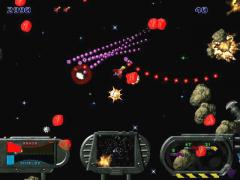 DP: How did
Logicware (which you founded) come about? Was AstroRock 2000 the only
game you did there?
DP: How did
Logicware (which you founded) come about? Was AstroRock 2000 the only
game you did there?
Rebecca Heineman: After 11 years at Interplay, it was time to move on. I didnít like the fact that Interplay was a huge company that didnít seem to know what they wanted to focus on. I missed that.
There were quite a few titles that Logicware as a company did. We did work for 3DO, Interplay, Id, Activision, MGM Interactive and Avalon Hill.
DP: Youíre also involved with Barking Lizards and/or Contraband Entertainment. What is your Ďtimelineí with respect to these two companies?
Rebecca Heineman: I own Contraband Entertainmentís assets. Currently, Iím an independent contractor whoís doing work for Barking Lizards in Dallas. Iím right now looking at some job offers so I may be settling down again really soon.
DP: Did you ever attend any industry shows, such as CES or Toy Fair?
Rebecca Heineman: I went to CES every year until E3 appeared. Then I attended every E3 since although it looks like E3 is gone. I also occasionally attended The Game Developers Conference and the Classic Gaming Expo.
DP: Do you still own any of your games for these systems, either as a keepsake, or to show friends or family?
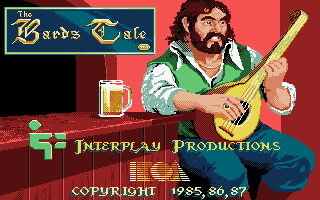
Rebecca Heineman: Yes. I have a huge Atari 2600 collection and a large storage room filled to the ceiling with my classic games. Many of my games are still shrink-wrapped.
DP: Which of your titles are your favorite, and what types of games in general?
Rebecca Heineman: I like first person shooters and Role Playing games (MmmÖ. Wasteland and Bardís Tale). I also have a weakness for the classic DOOM. And I play that from time to time against my son in deathmatch mode.
DP: Have you stayed in touch with any of your former co-programmers?
Rebecca Heineman: Iíve mostly stayed in touch. I sometimes get a pleasant surprise when someone from my past appears when I least expect it (like, walking down the halls of Electronic Arts) and we say hi and reminisce.
 DP:
What were some of
your experiences working for each company? Any stories or anecdotes from those
days that you recall?
DP:
What were some of
your experiences working for each company? Any stories or anecdotes from those
days that you recall?
Rebecca Heineman: Working from Chris Jacobsonís apartment when we were trying to get Contraband off the ground was a fond memory.
DP: What are your thoughts on how the industry has evolved?
Rebecca Heineman: Itís interesting how itís come full circle. These hand-held phones require games that pretty much are games intended for the C-64. I enjoyed working on some J2ME titles a few years back. It reminded me of the old days. Now, most games are really interactive versions of a movie, complete with scriptwriting, name actors and full orchestras performing the music. Sadly, many games forgot that they are supposed to be a game and not a movie.
DP: Lastly, you were mentioned in Tom Hirschfeld's book, "How to Master Home Video Games" (page 61) about being the Atari VCS Space Invaders national champion in 1981 (article appeared in first issue of the "Atari Age" newsletter), and beating out over 10,000 players with a top score 165,200! I won a local VCS S.I. tournament back in 1982, although my strategy was a little different from yours (as described in the book). What do you recall from that experience?
Rebecca Heineman: Yes, I did win. I had two strategies. One was "slow and steady", which won the L.A. tournament, and the other was "kill everything on the screen ASAP", which won me the NYC finals. In the finals, I took an hour and 45 minutes to get the highest score. I lost two bases because my strategy was riskier, but faster. It paid off and I won.
| GAMEOLOGY |
| GAME | SYSTEM | COMPANY | STATUS |
| Penetrator | Atari VCS/2600 | Avalon Hill | unreleased |
| Chuck Norris Superkicks | VIC-20, C-64 | Boone Corporation | released |
| Robin Hood | VIC-20 | Boone Corporation | released |
| Final Eclipse | C-64 | Boone Corporation | unreleased |
| Borrowed Time | Apple II, C-64 | Interplay / Activision | released |
| Demon's Forge, The (rewrite) | Apple II | released | |
| Graphics Master | Apple II | ShareData | released |
| Mindshadow | Apple II, C-64 | Interplay / Activision | released |
| The Tracer Sanction | Apple II, C-64 | Interplay / Activision | released |
| World Karate Championship | Apple II | Epyx | released |
| Wasteland | Apple II | Interplay / EA | released |
| Bard's Tale I: Tales of the Unknown | Apple IIGS, C-64 | Interplay / EA | released |
| Bard's Tale II: The Destiny Knight | Apple IIGS, C-64 | Interplay / EA | released |
| Bard's Tale III: The Thief of Fate | Apple IIGS, C-64 | Interplay / EA | released |
| Dragon Wars (aka Bard's Tale IV) | Apple IIGS, C-64, PC | Interplay | released |
| Out Of This World | Apple IIGS, SNES, MAC, 3DO | JVC / Interplay | released |
| Rescue Rover | Apple IIGS | Softdisk | released |
| Tass Times in Toontown | Apple IIGS, C-64 | Iinterplay | released |
| Ultima I | Apple IIGS | Origin | released |
| Wolfenstein 3-D | Apple IIGS, SNES, MAC, 3DO | Id | released |
| Track Meet | Gameboy | Interplay | released |
| RPM Racing (audio) | SNES | JVC / Interplay | released |
| Rock and Roll Racing | SNES | Interplay | released |
| Doom | 3DO | Logicware / Art Data | released |
| Outer World | 3DO | Delphine Studios / Interplay | |
| AstroRock 2000 | MAC, PC | Logicware | released |
| Chitty Chitty Bang Bangís Adventures in Tinkertown | MAC, PC | Logicware | released |
| Descent | PC | Interplay | released |
| Defiance | PC | Logicware | released |
| Medal of Honor: Pacific Assault | PC | EA | released |
| Aliens vs. Predator | MAC | Fox / Logicware | released |
| Crosman Air Gun Challenge | MAC, PC | Logicware | released |
| Half-Life | MAC | Logicware | released |
| Heretic II | MAC | Contraband | released |
| Jazz Jackrabbit II | MAC | Logicware | released |
| Kingdom: The Far Reaches | MAC, 3DO, PC | Logicware | released |
| Monster Hunter | MAC, PC | Contraband | released |
| Quake II | MAC | Logicware | released |
| Remington Top Shot | MAC, PC | Logicware | released |
| Shadoan | MAC, PC | Logicware | released |
| Shattered Steel | MAC | Logicware | released |
| SiN | MAC | Contraband | released |
| Zork: The Grand Inquisitor | MAC, PC | Contraband | released |
| Activision Anthology | PS2 | Contraband | released |
| Goldeneye: Rogue Agent | PS2, XBOX, GC | EA | released |
| Medal of Honor: European Assault | PS2, XBOX, GC | EA | released |
| Medal of Honor: Rising Sun | PS2, XBOX, GC | Contraband | released |
| Battle for Middle Earth II | XBOX 360 | EA | released |